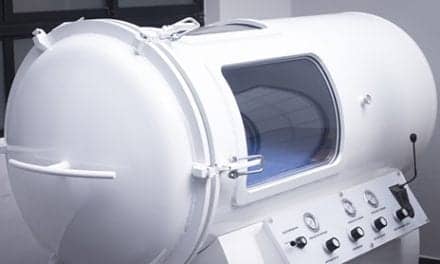Anterior Cruciate Ligament (ACL) reconstruction patients often face bone and muscle loss immediately following the procedure. Combining blood flow restriction (BFR) therapy with traditional rehabilitation efforts may slow bone loss and reduce return to function time, researchers suggest.
“Providing BFR as part of the rehabilitation efforts following ACL surgery appears to help preserve the bone, recover muscle loss, and improve function quicker, according to our research,” says lead author Bradley Lambert, PhD — Orthopedic Biomechanics Research Laboratory, Department of Orthopedics & Sports Medicine, Houston Methodist Hospital, in a media release.
Lambert and his colleagues presented new results of a randomized prospective study initiated and directed by Dr Patrick McCulloch, MD (PI & Chair of Research for the Department) at the American Orthopaedic Society for Sports Medicine (AOSSM)/Arthroscopy Association of North America (AANA) Specialty Day, held recently in Las Vegas.
The study followed 23 active young patients (Mean age 23) who received ACL reconstruction surgery. Participants were divided into two groups. Both groups received the same rehab protocol. However during select exercises the BFR group exercised with an 80% arterial limb occlusion using an automated tourniquet.
Bone mineral density, bone mass, and lean muscle mass were measured using DEXA. The addition of BFR therapy to standard rehab exercises was found to prevent muscle mass loss in the whole leg and thigh in the postoperative limb compared to rehab alone. Intriguingly, the addition of BFR was also observed to minimize losses in bone mineral content and preserve bone density in the limb compared to standard rehab alone.
These findings coincided with improved functional outcomes observed by Dr. Corbin Hedt, DPT who oversaw the therapy sessions, a media release from American Orthopaedic Society for Sports Medicine explains.
“BFR is a suitable additive therapy to ACL rehabilitation for the purposes of minimizing the loss, and enhancing the recovery of muscle, bone, and physical function. While further research is needed to fully illuminate the physiologic mechanisms responsible for our results, these findings likely have wide ranging implications for fields outside of ACL rehab alone such as injury prevention, age-related muscle and bone loss, military rehabilitation, and potentially space flight,” Lambert says, in the release.
[Source(s): American Orthopaedic Society for Sports Medicine, Science Daily]





